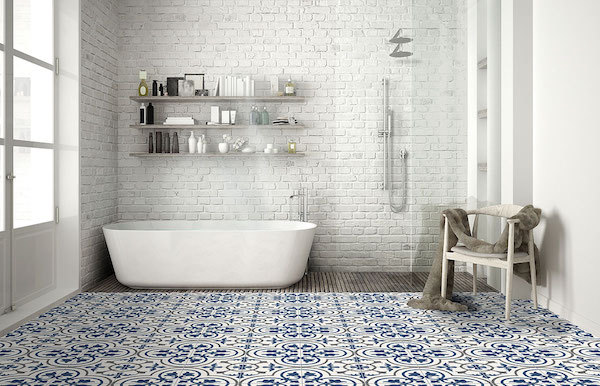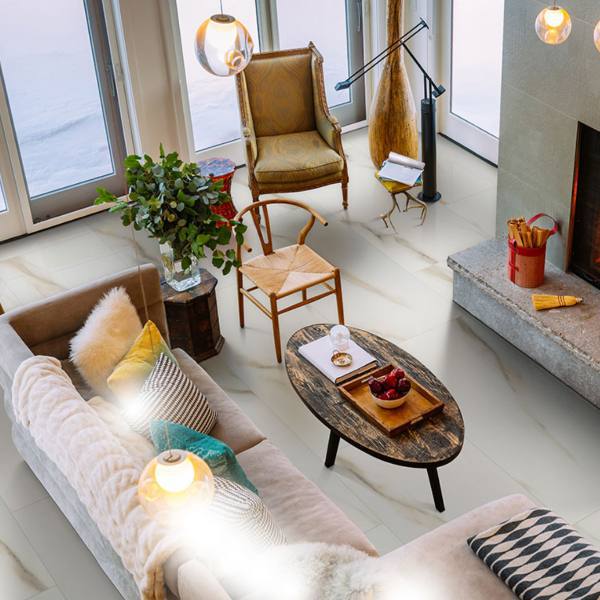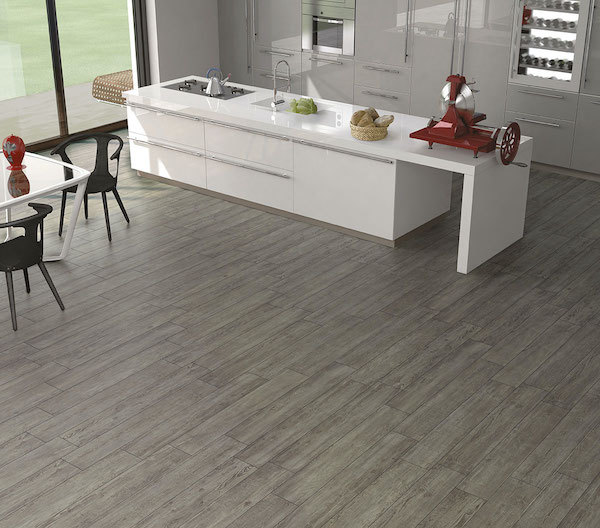How To Clean Porcelain Floor Tiles
June 30, 2021
Porcelain floor tiles aren't just classy- they can increase your property value by thousands of dollars. Whether or not you intend to resell your home, this upgrade can greatly boost the quality of your living space.
Porcelain tile floors are one of the simplest flooring materials to clean. However, there are still some things to keep in mind to protect it from scratches and stains. Read on for an explanation of the various tactics for cleaning different types of porcelain flooring.
Unpolished Porcelain
Whether your unpolished porcelain is indoors or outdoors, it's important that you begin by sweeping your surface. You also must vacuum to remove loose debris that may be stuck on your flooring.
All tile and stone floors need to then be slathered with a cleaning solution. While you can get specialized solutions at the store, it's best to use a homemade cleaner. Create a solution made from water and white vinegar.
You then will need to use a soft cloth or sponge to spread the solution over the tile. In most cases, this will be more than enough pressure to remove dirt and grime.
Regardless of the cleaner that you prefer, you'll need to remove it thoroughly with clear water before it dries on the surface. If you fail to do so, it could stain your tiles and cause them to fade.
For more persistent stains, you can use a floor scrubbing machine. These machines are specially made for porcelain tile floors and will not scratch the surface. They use a safe abrasive pad or brush to remove stains while keeping the tile safe.
Make sure that you clean the grout lines of your tile as well. You don't need grime building up between tiles and causing them to weaken or fade.
When all is said and done, let the floor air dry. You don't need to wipe the clear water off it manually.
Polished Porcelain
Polished porcelain is the modern tile option of choice for many homeowners. Like unpolished porcelain, you can begin cleaning this flooring by sweeping it. You then will need to select a cleaning solution, though this is a slightly different process than it is with unpolished tile.
You can still use either a vinegar/water solution or a store-bought cleaner. If you choose the former, you need to water it down a bit more than you would when cleaning unpolished tile. Those who use store-bought options need to make sure that the cleaner is a mild solution rather than a heavy-duty one.
If your solution is too heavy, it may be too abrasive for the polished surface. There are many differences between polished porcelain vs ceramic tile, but they're similar in that they scratch easily. Because their polish is made from a thin clear coating, it's easy to scratch off while cleaning if you use something too abrasive.
The same applies to your cleaning tools. You need to use a soft cloth or soft sponge- a tile-cleaning machine is not an option here. If you use even a cloth that's too abrasive or press down too hard, you could cause permanent scratches to the polish.
You can remove your cleaner by splashing it with clear water, much like you would have done with an unpolished floor. However, you shouldn't let it air dry. If you do, you'll end up with water spots. Wipe it dry to prevent your tile and flooring from developing these stains.
Textured Porcelain
Textured porcelain is an amazing choice for its intricate tile patterns. However, its aesthetic appeal makes it a bit more challenging to clean than other alternatives.
You need to begin by sweeping your tile flooring. Make sure that you use a soft-bristled broom rather than a more abrasive one- you don't want to ruin the texture. Sweep in two directions to clean the floor effectively.
After that, there's still likely to be some remaining debris on the floor. That's alright- take a vacuum to it. You won't destroy the floor with a little bit of light vacuuming, especially when you get a small handheld vacuum.
Next, mix a neutral store-bought cleaner with hot water. Don't immediately apply it to your flooring. Instead, wait anywhere between 5-10 minutes before dipping a brush in.
Rub the brush across the floor in two different directions to clean it evenly. This is the same way that you will have swept earlier, so it will feel familiar to you.
When all is said and done, rinse the cleaner off with clear water. Brush it dry to prevent water spots as you would with polished porcelain. You then are done cleaning the tiles in most cases.
For high traffic areas, you should clean your tile floor at least once a month. This is true regardless of the type of tile flooring that you have. It will prevent the buildup of more dirt and grime than you can handle in a single cleaning session as well as prevent staining.
More on Maintaining Your Porcelain Floor Tiles
Now that you understand how to clean the most common types of porcelain floor tiles, it's time to get started. Contact us with any remaining questions that you have on kitchen and bathroom floor, countertop, or backsplash maintenance.
Our experts are happy to discuss your individual flooring with you and create a perfect plan for its upkeep. If you're looking for new porcelain tiles, we also are happy to point you in the direction of some high-quality and easy-to-maintain options. We're committed to helping you boost the overall quality of your space, so don't hesitate to reach out!
READ MORE ABOUT THE BENEFITS OF PORCELAIN TILE
Find Porcelain Tile Inspirations with Our Backsplash Tile Guide
Get Vertical with Trendy Porcelain Wall Tile
Improve Any Room with These Easy Porcelain Floor Tile Patterns


.jpg)
